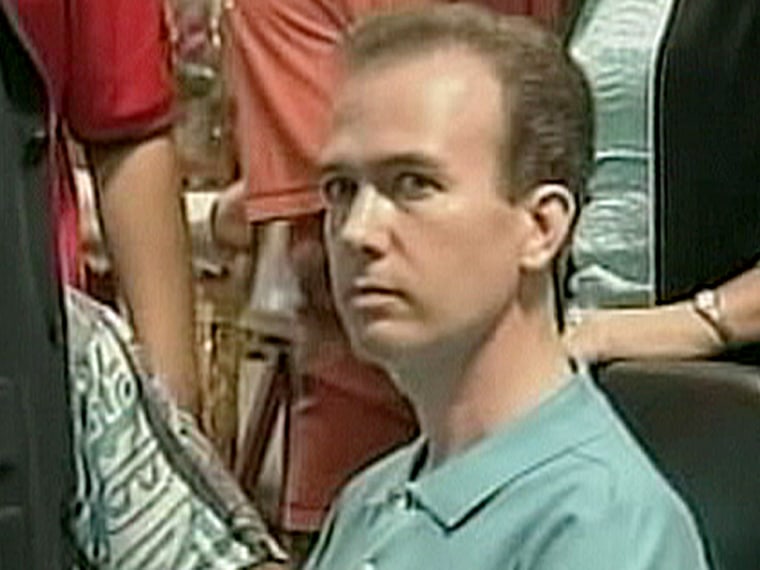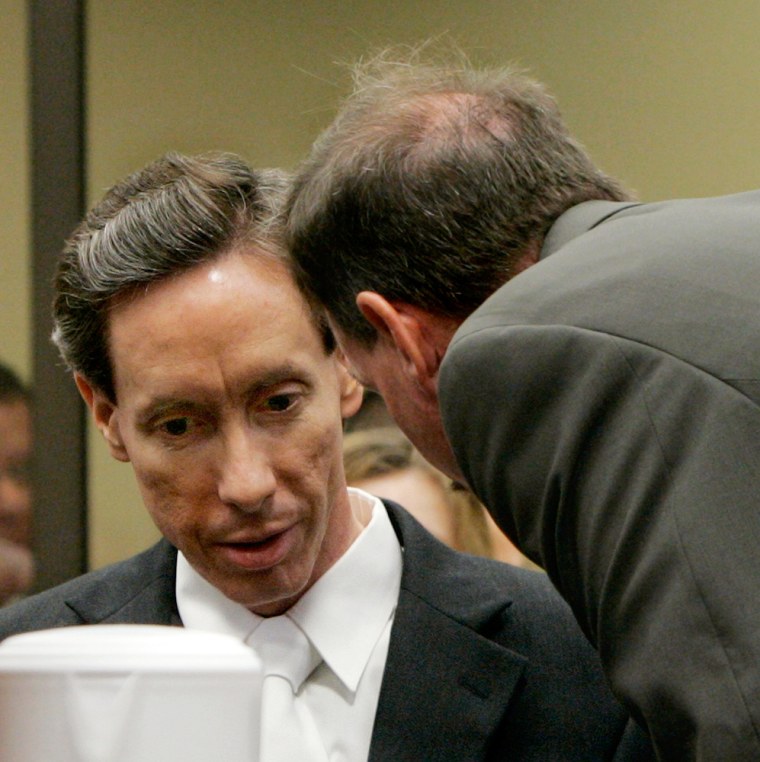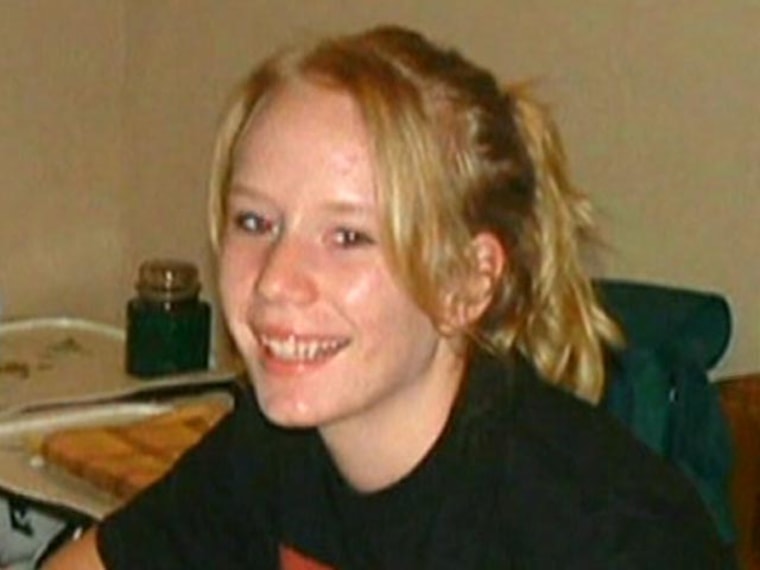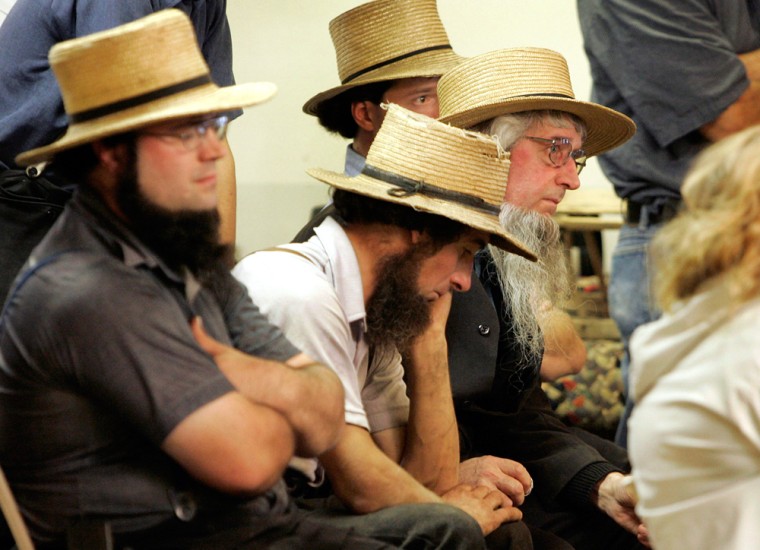There's nothing like a crime story to grab the public's imagination — and 2006 provided some of the most gripping in the past few years.
Below, in chronological order, are seven stories that dominated the tabloids, caused a buzz among bloggers and were discussed at length by cable TV pundits.
An honor student’s brutal murder. The murder of New York graduate student Imette St. Guillen troubled a city known to 20-somethings more as the good times of the “Sex and the City” than the gritty place of the Son of Sam era.
St. Guillen was last seen Feb. 25 at a trendy SoHo bar called The Falls at the end of a late night out. Her body was discovered 17 hours later in a bleak corner of Brooklyn after an anonymous 911 caller alerted police.
Was the killer a passerby? Or a serial killer on the loose? Did he act alone?

It was the kind of case St. Guillen came to New York to study at the John Jay College of Criminal Justice.
The gruesome crime resounded all over the country. The murder was cold-blooded — her captor had jammed a sock down her throat, cut off her hair and wrapped her head in transparent packing tape. The newspapers called him the “Mummy Maniac.”
And St. Guillen had everything to hope for. “She was really doing well in her life,” commented NBC News Analyst and former prosecutor Susan Filan, of the dean’s lister just two months shy of her degree.
The bouncer at The Falls bar, Darryl Littlejohn, was charged soon after with first degree murder. Littlejohn, a parolee with a long rap sheet, had been the prime suspect in the slaying. St. Guillen was last seen talking to the bouncer; meanwhile, blood found on the plastic ties used to bind the victim matched Littlejohn.
His defense attorney now claims he is being used as a scapegoat by police who were seeking a quick arrest in the high-profile case.
Littlejohn shouldn’t have been working at the bar at all — he had a 9 p.m. parole curfew. This month, in St. Guillen’s hometown of Boston, “Imette’s Law” was proposed. According to the plan, bouncers in bars and nightclubs would be required to go through stricter background checks and mandatory training.
The Duke case. The story began in March, with a party thrown by members of the Duke University lacrosse team at a house on the edge of campus. The players hired two women to perform exotic dances. By most accounts, the party began well — but quickly turned ugly.
One dancer told police that racial slurs were yelled at them and that one of the players brandished a broomstick, frightening the women into a bathroom — and eventually into leaving. One dancer went back into the house and later told police she’d been raped in the bathroom by three white players for 30 minutes.
Within days, Durham District Attorney Mike Nifong announced he would be pressing charges.
It seemed like a morality tale of jocks gone wild. Nifong called the players “hooligans” and said that he was certain a racially motivated rape had occurred. By May 16,Reade Seligmann, 20, and Collin Finnerty, 20, and David Evans, 23, were indicted. All three proclaimed their innocence and are free on bond.
Blogger LaShawn Barber, who writes primarily about politics and race, was piqued by the story. “It’s salacious. It’s a black woman — a single mother stripping to feed her kid — gang-raped and brutally beaten by ‘rich college boys. There’s lots of drama. There’s a movie in here,” she says.
“But did it really happen? Something about the initial media reports didn’t sit well with me,” says Barber.
Kim Roberts, the other dancer hired to perform at the party, has given conflicting accounts of the evening. The accuser’s credibility has also been questioned in other ways. According to documents publicly available in court filings, the accuser kept changing her story — including how many men were involved, whether or not she had been drinking or taking a muscle relaxant than night, and if she had been groped or raped.
And then there’s the controversial IDing of the three suspects: The accuser was asked to pick her assailants out of a line-up that only included the 46 lacrosse players on the team.
Throughout the year, questions have been raised about the district attorney and police’s handling of the case. Was it overeager prosecution by a D.A. up for a re-election?
This month, it was revealed that the genetic material found in the accuser’s body and underwear came from several males, but none from any team member.
This November, Nifong fended off two challengers and won re-election. But a North Carolina congressman has asked the U.S. Department of Justice to investigate Nifong’s handling of the case, saying Nifong might have engaged in prosecutorial misconduct and violated the civil rights of the three lacrosse players.
“It became clear that the ‘rape’ itself isn’t the story,” says Barber. “It's that justice is supposed to be color-blind. That should be true for both black victims and white defendants.”
And at year's end, a big development in the case: Prosecutors on Dec. 22 dropped rape charges against the three; however, they still face kidnapping and sexual offense charges.
According to court papers filed by Nifong, the accuser told a prosecution investigator on Thursday that she now does not know if she was penetrated during the alleged attack.
Jon Benet murder solved? For 12 days in 2006, it seemed that one of America’s biggest tabloid whodunits was about to be solved. The story, of course: “Who Killed Jon Benet Ramsey?”
On August 16, after nearly a decade of a case turned cold, news broke that there was an arrest in Bangkok, Thailand — a man had confessed to the 1996 killing of the six-year-old beauty queen. Boulder, Colo., police and immigration officials were already extraditing him back to the U.S.

“I loved JonBenet very much,” said John Mark Karr, as he was jostled by reporters during a strange news conference after his arrest. “I was with JonBenet when she died,” he added, insisting that her death was an accident.
In an instant, a once-obscure substitute teacher became infamous. But right away Karr seemed more than a little odd — and oddly eager to implicate himself.
Investigations into his background revealed he had a history of inappropriate behavior with his students. He’d twice married teenage girls, and he was arrested in 2001 for possession of child pornography — for which he was on the lam. He was also said to be obsessed with high-profile child murder cases, such as that of Polly Klaas.
Was Karr making a false confession in a bid to seek attention? All the speculation and conjecture surrounding the Ramseys came back. Cable pundits argued about the “intruder theory” vs. the “umbrella of suspicion” that never really went away.
In the end, DNA held the key. DNA found on the girl’s body did not match Karr.
Instead of facing a murder charge, Karr was extradited to California to face the five-year-old pornography case.
But the misdemeanor pornography case fell apart almost as quickly, as investigators admitted losing vital computer evidence. By early October,a judge dismissed the charges, saying prosecutors didn’t have enough evidence to take the case to trial.
Since then, Karr briefly lived at his father’s home Sandy Springs, Atlanta, but was driven away by pressure from his neighbors. The community grew concerned about his proximity to a park and a playground.
Karr, it turns out, isn’t Jon Benet’s killer. And now he isn’t even a registered sex offender.
Serial killers in Phoenix. Along with the annual summer heat wave, there was a crime wave in Phoenix in 2006. One series of crimes was the work of a killer who also sexually assaulted his victims, while another serial killer seemed to be shooting residents, at random, on the street.
Phoenix residents lived in fear, as Guardian Angel volunteers patrolled at night and local news outlets updated citizens everyday. People went out of their way to stay safe, some even going as far as far as to arm themselves.

The so-called "Serial Shooter" was tied to 37 random shootings than began as early as May 2005. The crime spree killed seven people and wounded 17, and police were hampered by a lack of eyewitnesses.
On Aug. 4, Dale Hausner, 30, and Samuel Dieteman, 33, were arrested at their Mesa apartment. Newly unsealed warrants revealed that listening devices were planted in the suspects’ apartment and car, where Dieteman was heard bragging about the crimes to a confidential informant.
The “random recreational violence,” as Dieteman later described it, would excite the roommates especially after they watched TV coverage.
Hausner and Dieteman were charged with two counts of murder and 14 counts of attempted murder. In November, Hausner was indicted on five more murder counts. Dieteman’s new charges include conspiracy to commit murder and attempted murder. Prosecutors plan to seek the death penalty.
The “Baseline Killer” was the other monster who kept Phoenix under siege for a year, a sexual predator named after the thoroughfare where several attacks occurred.
Police say the Baseline Killer was responsible for 23 rapes, shootings, and robberies that left eight people dead. The victims were women aged 19 to 39, some killed while going about their daily activities, such as leaving work or waiting at a bus stop.
Police worked the case hard, following up to 8,000 leads, and in September announced the arrest of a suspect connected to the case. Mark Goudeau, a 42-year-old construction worker and ex-convict, was held on suspicion of two sexual assaults.
Over a month later, Phoenix Police Chief Jack Harris officially tied Goudeau as the Baseline Killer crimes, and said he would be charged with 71 counts, including nine murders. (The ninth related killing was not public until then.) DNA and ballistic evidence is said to implicate Goudeau, although authorities would not elaborate further.
“His arrest is a good thing,” Mayor Phil Gordon said. “Any individual who has been arrested for rape and kidnapping is a violent monster off the street. That’s a good day.”
FBI most wanted: A polygamist. After four months on the FBI’s Ten Most Wanted list, 50-year-old Warren Jeffs, leader of a polygamist sect that had broken with the Mormon church, was arrested in late August.
He and two other people were pulled over by a Nevada Highway Patrol trooper just north of Las Vegas. Jeffs has been called a religious zealot and a dangerous extremist by those familiar with the Fundamentalist Church of Jesus Christ of Latter-day Saints, a group that broke away from mainstream Mormons a century ago when they abandoned polygamy.
He is said to have at least 40 wives and nearly 60 children, and was wanted on the suspicion of arranging marriages between young girls and older men. Although the sect has long practiced arranged marriages, young girls were rarely married off until Jeffs came to power, say authorities. He is also known for dismantling families by kicking out men and boys, and reassigning women and children to new husbands and fathers.

Arizona Attorney General Terry Goddard called Jeffs’ arrest “the beginning of the end of ... the tyrannical rule of a small group of people over the practically 10,000 followers of the FLDS sect.” Polygamy is illegal under Utah and federal laws.
Jeffs was revered in his community as prophet who communicates with God and can strip followers of their eternal salvation. With him behind bars, it is unclear what will happen to his 10,000 adherents. Some of the members reportedly believe that Jeffs is still in control of the sect even from behind bars.
He is currently in Utah, where preliminary hearings have begun on whether or not he is to be charged with rape as an accomplice. His defense team says Jeffs is being persecuted for his religious beliefs.
Deadly school shootings. Seven years ago, 12 students and a teacher were murdered in the country’s deadliest school shooting in Columbine, Colo.
In Platte Canyon High School in Bailey, only 28 miles away, images of that tragedy echoed all too eerily last September.
A man dressed like a student, with a dark-hooded sweatshirt and backpack calmly walked into the school and took seven girls hostage in room 206, lining them up face first against the chalkboard. Armed with a semi-automatic pistol and revolver, he claimed he had a bomb and fired off a warning shot.
One by one, the girls held hostage were released — but not until after they were sexually violated.
At 3:30 p.m., with two girls still in the classroom, a SWAT team stormed in using explosives. In the hail of gunfire, one girl ran for freedom. But the other, Emily Keyes, wasn’t as lucky. The gunman used her as a human shield, and then shot her in the head and turned the gun on himself.
The school shooter was later identified as Duane Morrison, a 53-year-old drifter who’d been living out of this jeep. Morrison worked as a carpenter in the Denver area, and had a short record of minor criminal offenses, with arrests for larceny and marijuana possession.

Emily Keyes’ parents say they don’t even want to hear about him. They try, instead, to focus on their daughter’s bravery. During the hostage crisis, Emily’s father sent his first-ever text message, asking her “Are you okay?”
The 16-year-old could have answered that in so many frightened ways, but instead, simply said “I love you guys.”
Her parents are now focusing on a campaign they call “random acts of kindness for Emily” — the idea that people should respond to this seemingly random act of violence by performing random acts of kindness.
But it wasn’t even a week later when another school shooting hit national headlines, this time in bucolic Amish country. Violent crime was virtually nonexistent in the picturesque landscape.
Milk-truck driver Charles Carl Roberts IV, carrying three guns and a childhood grudge, stormed a one-room Amish schoolhouse in Lancaster, Pa. Roberts sent the boys and adults outside, barricaded the doors with two-by-fours, and then opened fire on a dozen girls. He killed three children before committing suicide. Two more children later died of wounds at a hospital.
Roberts was bent on killing young girls as a way of acting out in revenge for something that happened 20 years ago, according to suicide notes and his last phone call to his wife.
For former FBI profiler Clint Van Zandt, the school shootings were the biggest crime story of year. “It could have affected any of us as parents, relatives, neighbors, or friends. The shooters were intruders. The question most have is why intruders attacked the two schools, why the two men chose the two schools, why girls as psycho/sexual targets of the intruders, and how do we keep them out.”
And in the face of these questions and pain, the Amish community reacted with grace. They buried their anger even before they buried the victims, publicly forgiving Roberts and offering condolences to his widow.
The school, a neat white building set amid green fields, with a square white horse fence around the schoolyard, was demolished a week after the victims’ funerals in an effort to close a painful chapter in their once-peaceful community.
'Net crime and predators. In 2006, more crimes seemed to have been committed on or investigated via the Internet. But no Internet crime has panicked parents as much as the threat of “predators.”
A word that used to be associated primarily with the animal kingdom now evokes the mental picture of a middle-aged man going online late at night to troll MySpace for pre-pubescent boys and girls.
20-year-old Justin Berry certainly put a face to the victim when he testified before Congress in April. He recounted how he went from a typical 13-year-old to an operator of a teen pornography Web cam business that featured his own erotic performances. Some adults, he says, took advantage of his naiveté.
In the same month, the deputy press secretary for the U.S. Department of Homeland Security was arrested for using the Internet to seduce a teenage girl. It was actually an undercover operation by Florida police.

This year alone, Dateline reported on five similar stings in four different states. A total of over 190 men were arrested. The TV exposure helped bring the issue to the national spotlight, illustrating that men willing to make a sex date with underage teens are in every community and come from all walks of life.
The issue of online predators has arguably affected the 2006 midterm elections. Rep. Mark Foley (R-Fla.) turned out to be the early October surprise, after it was revealed that he made advances toward underage congressional pages via chat and e-mail.
“It’s debatable if Foley’s actions were a crime,” says conservative blogger LaShawn Barber. “But if I were a parent, I’d be really angry. I think it affected the elections. There’s a real creepy factor about all of it.”
The Associated Press and Dateline contributed to this report.
